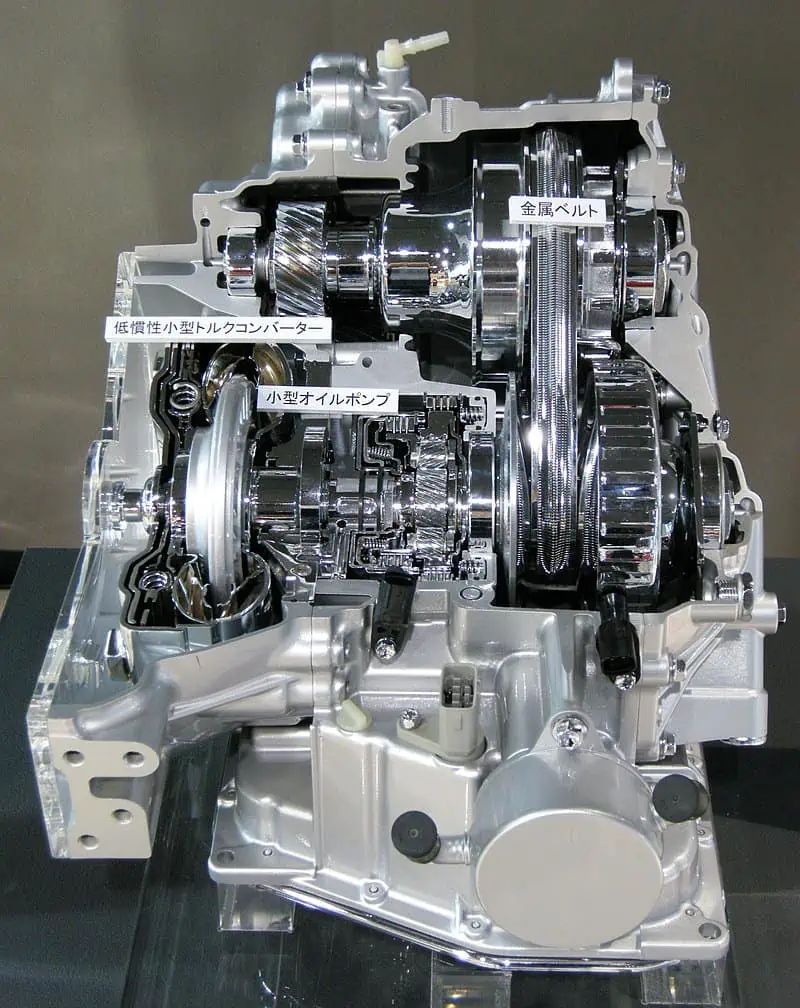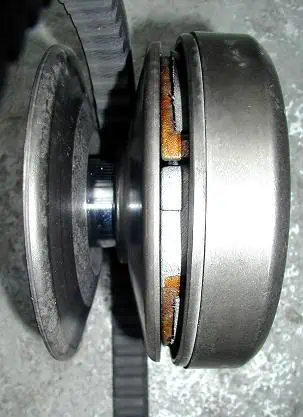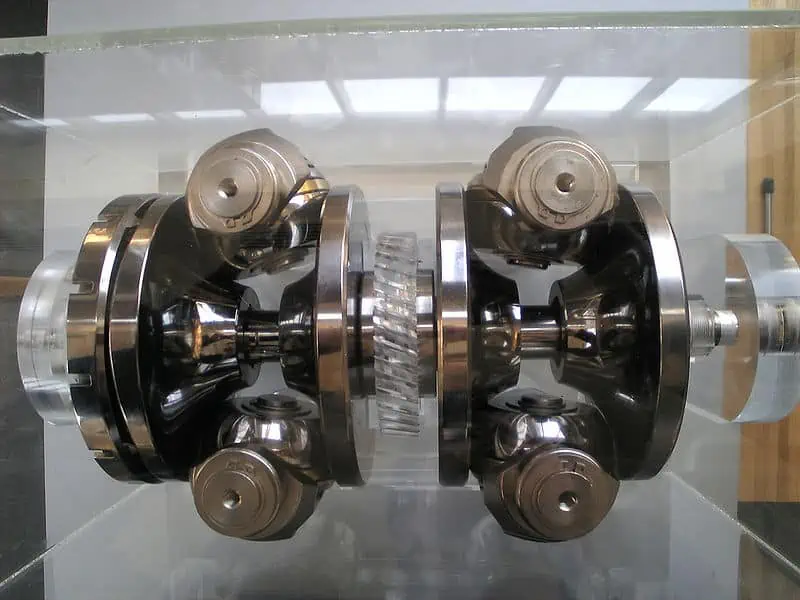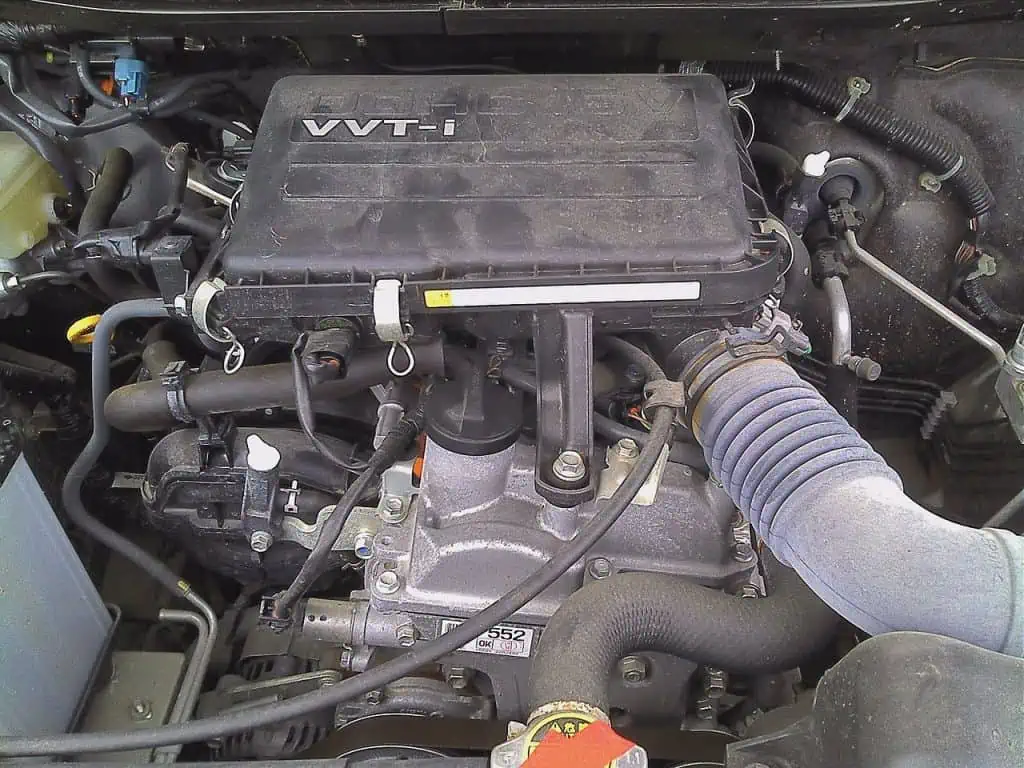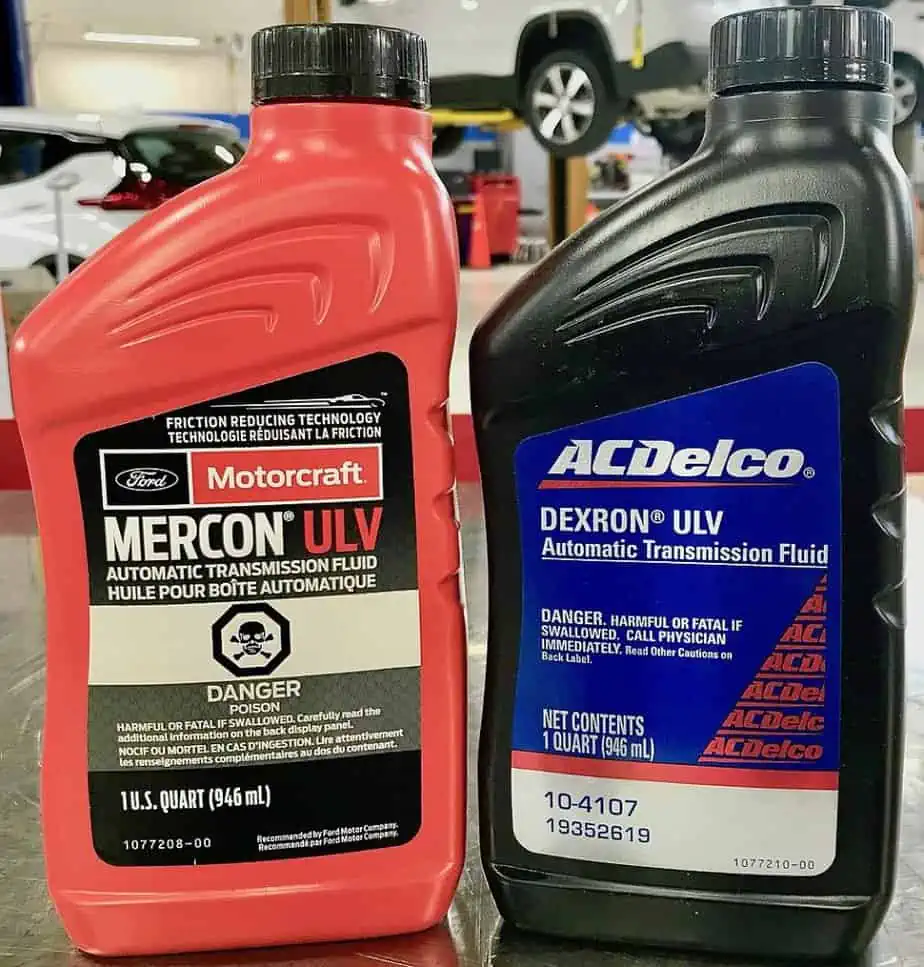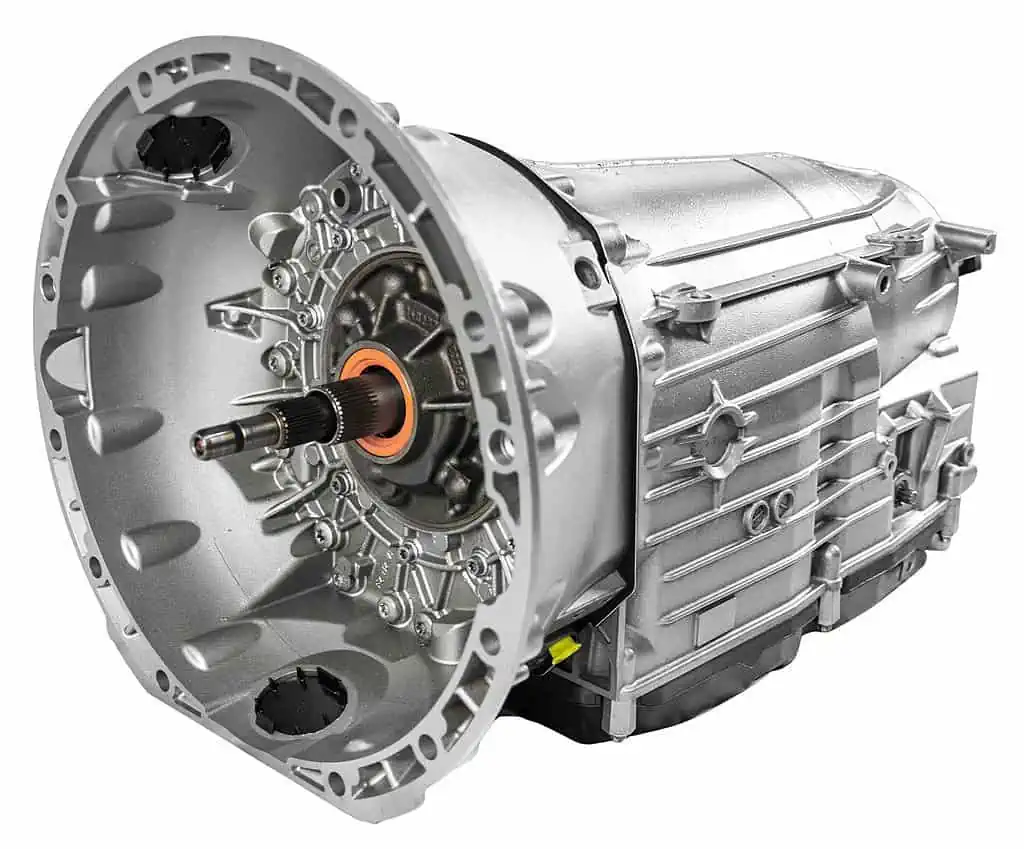We are beginning to notice an accelerated pace of development starting to trickle in thanks to ongoing improvements in automobile powertrains and technologies. The automotive industry is developing far more quickly than at any other time in history, from electrification to hybrid systems.
Even the relatively unchanged transmissions from years past are altering quickly now. However, you may wonder, are CVT transmissions reliable?
Their foundation is the ground-breaking idea of shifting gears, sometimes known as “continuously variable transmissions.” but completely devoid of any physical apparatus.
A CVT gearbox is theoretically a gearless transmission because of a system of pulleys, chains, and cones. Or you may think of them as having an “infinite” number of gears since CVTs are capable of infinitely varying their gear ratios.
The introduction, expansion, and continuous use of CVTs are not without criticism, though. Its dependability is a minefield to navigate if anything. Nissan, for instance, produces CVTs that are so unreliable that some people believe they are to blame for Nissan’s collapse.
Conversely, Honda has cars with CVTs as well, but they stand out as being far more reliable. The question is, are CVT transmissions reliable, or should you stay away from them?
CVT Transmissions: What Are They?
It’s important to take a minute to learn more about the aforementioned component before we conclude that our CVT transmissions are trustworthy. Therefore, what exactly is a “continuously variable transmission” and what does it do?
As we are all aware, car gearboxes are normally categorized as either “automatic” or “manual.” The former automatically shift gears for you, but the latter requires your input.
Given that it switches gears automatically, a CVT transmission is in this sense an automated gearbox. Although physical cogs (or gears) with predetermined gear ratios are still present in automatic transmissions, each CVT gearbox has a unique operation.
A continuously variable transmission by Hatsukari715. A system of pulleys, chains, and cones in a CVT gearbox makes it possible for it to operate without gears.
They don’t have any “gears” at all in that. It’s interesting to note that Leonardo da Vinci invented CVTs (or non-planetary gearboxes) more than 500 years ago.
In place of gears or teethed wheels, CVTs employ a pulley system. hence eliminating the need for a pre-configured set of gear ratios by using actual gears.
Instead, CVTs could alter the gearing ratios indefinitely without being constrained by the mechanical and physical properties of conventional gears. Nevertheless, automakers continue to advertise CVTs as having “gears” because of how designed their variability is.
In other words, even with a CVT, you still need to shift into higher and lower “gears,” park, reverse, neutral, and so on. Using a CVT while driving is a fascinating experience.
You can watch the rpm rising to approach the redline as you pound on the throttle pedal. However, once it is there, the shifting takes some time to occur. After that brief interval, the CVT engages without any discernible “shifts.”
CVT Transmissions’ History
In addition to being well-known for his paintings, Leonardo DaVinci was also an accomplished engineer who, in 1490, invented the first continuously variable transmission.
A CVT, also known as a variable speed gearbox, was created in 1879 by Milton Reeves, a pioneer in the automobile industry. It served as a sawmill.
The Reeves CVT was later adopted by other automakers once he began utilizing it in his vehicles. Daimler and Benz did, however, formally patent the CVT design in 1886.
Zenit used the first CVT in motorcycles. Due to their effectiveness, these motorcycles gained popularity and were even utilized in competitions. Later, they were prohibited from participating in hill-climbing contests.
In the late 1980s, Subaru became the first automaker to use a CVT in its vehicles, which formally launched this transmission into the mainstream of the auto industry. Nowadays, almost all automakers provide at least one car with a continuously variable gearbox.
The Design of CVT Transmissions
In a conventional continuously variable transmission, two pulleys are linked together by a chain or a V belt. Two cone-shaped parts that can move both together and apart make up the pulleys.
On one side of the pulley, the belt’s cross-section rides higher, and on the other pulley, it rides lower. The engine is attached to one side, and the transmission to the other.
Therefore, by shifting one pulley portion closer together and the other further apart, the gear ratios can be changed smoothly. The two pulleys’ diameters can be changed to produce an endless variety of torque ratios that can be matched to the output shaft.
Fuel economy and smooth acceleration are made possible by this. A Continuously Variable Transmission, in its simplest form, comprises a belt, a series of drive pulleys, and a torque pulley.
The architecture of CVTs has improved as they have developed through time, thanks to improvements made by automakers.
For instance, the CVT in the Toyota Corolla S range has preset modes, such as sport mode, paddle shifters, and even seven extra artificial gears, to help control engine revs and other unfavorable aspects of CVTs. The first hybrid SUV with a continuously variable transmission was just released by Nissan.
Launch Gear is used in several Toyota automobiles that have CVTs. The typical CVT was altered by the automaker to simulate a standard automatic transmission. Like putting the car in first gear on an automatic gearbox, the Launch Gear.
The vehicle will automatically switch out of this gear and start operating as a conventional CVT as the driver accelerates and speeds up. Experts predict that improvements in CVT design will make this sort of transmission more common.
A continuously variable transmission (CVT) drive belt by Benutzer:Thomas Ihle / CC BY-SA 3.0. Due to the lack of restrictions imposed by the mechanical and physical characteristics of conventional gears, CVTs can change the gearing ratios indefinitely.
What are the Various CVT Transmission Types?
In other words, a CVT switches gears without giving you the impression that your gearbox is changing cogs. If you’re not used to it, it can be somewhat unsettling.
As though you were changing into a new gear, you can see how the engine’s RPMs oscillate up and down. But it does it without any jolts, steps, or distinct feedback. A CVT might shift up or down without taking steps, which is more effective.
After all, even the best automatic gearboxes must continually “hunt” for the appropriate gear before shifting into it. However, how do CVT transmissions handle this?
Before going any further with that, it’s important to realize that not all CVTs are constructed the same way. There are typically three different CVT transmission versions and types. Despite having the same principles, they each operate differently:
1. The Pulley-Based CVT
They are by far the most popular CVT on the market right now. The majority of automobiles you encounter (assuming they have a CVT) will almost certainly have a pulley system. Power tools and other types of machinery also use a variety of pulleys and belts (or chains).
2. The Toroidal CVT
A toroidal CVT uses power rollers and discs in place of belts (or chains) and pulleys. Not many cars will likely be using this. Their fundamental operation isn’t all that unlike from a pulley CVT. Simply swap out the belt for a power roller and the pulleys for discs.
3. The Hydrostatic CVT
You might employ fluids to shift gears as opposed to a pulley or toroidal CVT’s mechanical input. Hydrostatic CVTs are typically seen in tractors and agricultural machinery. Fluids are pumped into hydrostatic motors, which use pressure to generate rotating motion.
How are Pulley-Based CVT Transmissions Designed to Work?
If you’re interested, we can go into greater detail on the sequential gear changes made by a CVT transmission. Understanding this can help us better understand the question, are CVT transmissions reliable?
Since pulley-based CVTs are the most prevalent, we will just discuss how they operate. Hopefully, this will be sufficient to cover the essentials of how a CVT transmission operates:
Stage 1: How They are Made, as well as the Components That Make Them Up
- First, a pulley-based CVT has three essential parts. There are two pulleys: a “driving” pulley that receives input from the engine (the crankshaft), and a “driven” pulley that outputs the CVT to the driven wheels of your car (through the driveshaft).
- Additionally, there is a strong metal chain (or occasionally a rubber belt) that connects the two pulleys. Metal chains are a very recent innovation in CVT design.
- These chains, often known as metal “belts,” are made up of sparse bands or links of metal that are held together by more robust metal pieces at their intersections. A metal chain is less likely to slide, quieter, and capable of handling higher torque than rubber belts. They are more pricey, though.
- Two 20° cones facing one another make up the design of each pulley. As a result, a groove or pit is formed in the center, into which the chain or belt slides and travels. To best grip the pulleys, these belts/chains often have a V-shaped cross-section.
Toroidal CVT was used in the Nissan Cedric (Y34) by Yones. Instead of belts (or chains) and pulleys, a toroidal CVT makes use of power rollers and discs. There won’t likely be many cars employing this.
Stage 2: How They Could Infinitely Change Gear Ratios
- Importantly, the pulleys’ diameters can change, pushing and pulling the cones in different directions. This can be moved by spring tension, centrifugal force, or hydraulic pressure (from fluids).
- The chain or belt rides lower in the V-shaped grooves as the diameter grows (and the cones are spaced farther apart). The belt rides higher in the V-shaped grooves as the diameter decreases (and the cones move closer together).
- This alters the belt or chain’s pitch radius, which is the distance between the pulleys’ centers to the point of contact.
- Keep in mind that when one pulley expands, the other pulley contracts. For instance, increasing the diameter of the input pulley will cause the diameter of the output valley to shrink. And the other way around.
Stage 3: How All of This Translates to Higher or Lower Gears
- This ensures that there are theoretically an endless number of gear ratios because of the relative change in diameter (or pitch radius). In a CVT, it might finely shift into higher or lower gears rather than 1st, 2nd, 3rd, and so on.
- Slower rotational speeds result from smaller input pulley pitch radii and larger output pulley pitch radii. therefore, a lower gear.
- Faster rotational speeds result from greater input pulley pitch radii and smaller output pulley pitch radii. higher gear as a result.
- Because there are an “infinite” number of gear ratios, CVTs are capable of “shifting” gears at any engine RPM or speed. Each shift, which is a pulley going back and forth with a rotating belt or chain in the middle, is seamless since no physical cogs or wheels are being switched around.
What are the Benefits of CVT Transmissions?
With such a distinctive form, structure, and functionality, CVTs have a unique set of advantages over traditional automatics that are both objective and subjective. This may or may not have an effect on your ownership and driving experience and help to address the question of are CVT transmissions reliable. They consist of;
1. The Performance
A traditional automatic must spend valuable time switching gears and searching for the correct gear. On the other hand, a CVT would make it simpler to keep your engine running inside its ideal powerband. In the end, a CVT might (in some cases) offer better performance.
2. Gear Changes
Old-school gearboxes contain gears, thus to shift up or down, the gearbox must shift into them. When changing gears, there is a brief loss of engine power, which causes the car to shake and wobble a little. A CVT’s seamlessness can stop this.
3. Fuel Efficiency
CVTs have been shown to use less gasoline on average than an automatic or manual transmission. This relates to our earlier observation about its capacity to sustain engine speeds in a balanced manner. It can accelerate more gradually, cruise more steadily, and maintain constant RPMs.
4. The Design
Comparatively speaking to conventional transmissions, CVTs contain fewer separate parts. It is devoid of any planetary gears, cogs, wheels, and other components. It only has those pulleys and a belt or chain going between them. It might have fewer potential problems because it is simpler and has fewer moving parts.
A typical car engine by Carolla / CC BY-SA 3.0. There are three crucial components to a pulley-based CVT. There are two pulleys: a “driving” pulley that outputs the CVT to your car’s driven wheels and a “driven” pulley that accepts input from the engine (the crankshaft) (through the driveshaft).
5. The Weight
This reinforces our earlier emphasis on simplicity. A typical CVT is smaller and lighter than a conventional gearbox since it has fewer internal components. Due to their lighter weight, CVT-equipped vehicles may also experience increased fuel efficiency.
What are the Disadvantages of CVT Transmissions?
You can’t win them all, though. Even though CVTs have many benefits, they also have several drawbacks. Some of these drawbacks directly address the issue of whether CVT transmissions are dependable. This can make your upcoming transaction impossible. These consist of:
1. The Feeling
The majority of CVTs are programmed to have smoother changes than automatic and manual transmissions with genuine gears do. As a result, that noticeable lack of feedback could occasionally lead you to believe that the gearbox is malfunctioning. Or perhaps it isn’t operating properly.
2. The Noise
Some CVT gearboxes have the propensity to remain in motion at higher RPMs and may violently rev under vigorous acceleration. This incident occurs in CVTs with programmed “steps” in the gearshifts. The engine and (CVT) transmission are louder while driving normally at higher RPMs.
3. The Sportiness
While this may be highly subjective, most people concur that CVTs don’t seem sporty. The feeling, crispness, control, and feedback that car enthusiasts want in their vehicles are absent from CVT gears. No matter how quickly or hard you’re working, it can feel fairly monotonous and boring.
4. The Upkeep
Indeed, CVTs are easier to use than conventional transmissions. However, because CVTs require specialized parts and there are only a small number of mechanics who are familiar with them, repairing one can be very expensive. Additionally, keep in mind that since CVTs employ customized lubricants, you cannot just use regular transmission fluids.
5. The Towing
The inability of CVTs to handle high torque and big loads is another significant disadvantage, particularly if you depend on heavy-duty cars. This explains why CVTs aren’t used in trucks very frequently. Vehicles using CVTs typically have towing capacity under 1,000 lbs. without fixed gear ratios.
Now the Question: Are CVT Transmissions Reliable?
The question of whether CVT transmissions are reliable—a resounding yes or a categorical no—is brought up once more. Well, given that the correct response depends on several important factors, it can be fairly complicated.
Therefore, the question of whether CVT transmissions are trustworthy is more of a maybe. First and foremost, rather than criticizing all CVTs together, the reliability of a CVT transmission must be examined on an automaker-by-automaker basis.
For instance, when it comes to CVT reliability, Nissan and Jeep have some of the poorest histories. They’ve used several CVTs from Jatco, a transmission manufacturer that has recently become an expert in CVTs.
They have a history of shifting problems, subpar performance, and early failure. Many owners of the latter had to spend hundreds of dollars on repairs or, more frequently, had to replace the entire gearbox.
On the other end of the scale, we have manufacturers like Honda and Toyota, whose more modern lineup of vehicles also uses CVTs. Subaru has also long centered its vehicle designs around CVTs.
A car engine by Yones / CC BY-SA 3.0. The engine and (CVT) transmission are louder while driving normally at higher RPMs.
The Subaru Justy was the first widely available CVT-powered vehicle on the US market. But in contrast to Nissan, some of the industry’s most dependable CVTs are produced by companies like Honda, Subaru, and Toyota.
In addition, we must consider maintenance in addition of simply looking at the manufacturers of those gearboxes and the automakers that have incorporated them into their vehicles.
This is especially important if you’re purchasing a used vehicle with a CVT. If this is the case, you should exercise caution and common sense when evaluating how the prior owner maintained and serviced the CVT.
Here are our key tips if you’re interested in determining whether are CVT transmissions reliable before making a purchase:
Tips Regarding CVT Transmissions
- Despite the difficult road to get here, most CVTs produced and marketed in the last few years are usually extremely dependable. Again, it’s not always the case and will depend on both how well-maintained a certain CVT is and who builds them.
- A more current CVT (say, within the previous 5 years or so) might easily run up to 100,000 miles without issue. It might easily last even longer with strict, consistent upkeep and care.
- Try to avoid a CVT right away. Take those early adopters from the 1980s and 1990s, for instance, which were mostly a project of Nissan and other Japanese automakers. The long-term reliability of CVT transmissions from that era is at best unreliable.
- Do your study to determine the dependability of a specific CVT, especially those installed on a vehicle with some market experience. Look into the recall history of the vehicle or even owner-filed grievances and lawsuits. That will give you an indication of how dependably their CVTs can perform. Starting with a website like CarComplaints.com is an excellent idea.
- Avoid Nissan if a CVT transmission is required. We can’t yet be confident that they have resolved all of the most pressing CVT-related problems, even with their most current models. Before purchasing a Nissan with a CVT, it’s generally a good idea to wait and see what other owners and experts have to say.
- Otherwise, some of the most dependable CVTs on the market are produced by its rival brands, such as Honda and Toyota. We still strongly advise conducting your independent investigation into what other owners have reported back and experienced. But neither of those two should have too many issues with CVT-powered vehicles.
Are CVT Transmissions Reliable: A Review from Different Automobile Manufacturers
Since we brought it up, here is our summary of how the most well-known automakers who utilize CVT gears perform:
1. Nissan CVTs
Nissan has rapidly turned into the family’s bad boy despite being a CVT pioneer. Overheating is the most frequent reason for Nissan CVT failure. Nissan’s weak and subpar cooling system is to fault for this. Nissan CVTs are notorious for their loud whining noises, slow responses, as well as shuddering, and early demise.
2. Honda CVTs
We want to start by refuting Honda’s assertions that the transmission fluid used in their CVTs is long-lasting. No, nothing—including CVT fluid—is built to last forever. To keep a CVT gearbox properly lubricated and cooled over time, they too must be flushed and changed. However, I would contend that in general, Honda produces the most dependable and trustworthy CVTs on the market.
Transmission fluid by Hymn62 / CC BY-SA 4.0. Flush and replenish the transmission fluid regularly. The CVT depends on this fluid to function properly as well as to cool and lubricate all of its moving parts.
3. Toyota CVTs
Toyota is well recognized for overbuilding its vehicles and producing some of the world’s most dependable autos as a company. Naturally, this principle extends to the way CVTs are designed and constructed. There isn’t much more to say outside the fact that a Toyota CVT transmission is more likely to function properly than a Honda one. And with that classic sturdiness in evidence.
4. Subaru CVTs
Subaru has been a fierce supporter of any criticism of its CVTs, more so than most other brands. The manufacturer has consistently given their CVTs high marks for their efficiency, low emissions, and smooth operation. Many Subaru owners even drive their CVT-equipped cars off-road. Subaru’s CVTs are alright, though not as durable as Honda’s and Toyota’s.
5. Mitsubishi CVTs
We return to (or very close to) the bottom with Mitsubishi. To be fair, Mitsubishi’s CVTs aren’t quite as hopelessly unreliable or dishonest as Nissan’s. Due to the number of problems numerous owners have documented, they are not too far off. As a result, you must drive cars equipped with CVTs very carefully. The good news is that Mitsubishis are typically far more affordable to buy.
CVT Transmissions: How Long Do They Last?
Automotive experts predict that the CVT transmission will last just as long as a typical automatic transmission. You might get 100,000 miles out of this transition, and in certain cases, cars can go 300,000 miles without any major issues depending on the manufacturer!
The Toyota Prius is one of the greatest manufacturers with a reputation for a durable automatic CVT transmission.
Remember that depending on the OEM, the CVT transmission’s longevity and dependability rating can vary greatly. As a result, if you intend to buy a car with such a transmission, you should carefully consider both the major praises and criticisms of those who have driven these cars.
Keep in mind that some serious issues do not manifest themselves right away. For this reason, when conducting your investigation, you must choose various car ages and examine various points in the vehicle’s gearbox lifetime.
Is a CVT Better Than an Automatic Transmission?
Some motorists stick to what they are familiar with, which is a car with an automatic transmission because they are unsure of what to expect from a vehicle with a CVT. There are a few glaring differences between operating a vehicle with a CVT and driving an automatic transmission, despite the similarities.
Traditional automatic transmissions have a range of configurations built around commonly observed driving styles. Some automobiles come with gearbox systems that put the engine’s performance first despite sacrificing horsepower and fuel efficiency.
A CVT can prioritize each of these tasks, in contrast to a conventional transmission. Continuously variable gearboxes can indeed deliver excellent fuel efficiency and top engine performance.
Since a CVT never shifts, you’ll get a smoother ride than you would in an automatic transmission car.
Automatic transmission by Leoiii6382 / CC BY 4.0. In comparison to a traditional automatic transmission, a CVT is also considerably lighter. Because of their lightweight design, vehicles using this transmission are excellent gas guzzlers.
When the engine needs an extra boost of power, drivers of vehicles with CVTs don’t have to cope with sudden downshifting, and the gear-hunting sense that occasionally comes with a typical automatic transmission is avoided.
A CVT is also significantly lighter than a conventional automatic transmission. Vehicles using this transmission are excellent gas-guzzlers in part due to their lightweight construction. These vehicles can more easily maintain a torque ratio that properly suits the driving operation because CVTs don’t use specific gears.
Since the transmission is always running in the proper gear, it is therefore simpler to accelerate from a stop at a red light and drivers are better able to negotiate challenging terrain. An automatic transmission has a few advantages over a CVT in terms of operation and convenience.
Care Guide for CVT Transmissions
You might be interested in learning how to maintain and take excellent care of CVT transmissions before we finish our examination of the question, Are CVT transmissions Reliable? Your CVT’s lifespan and dependability can be extended with regular maintenance (and a light touch). So, here is a brief checklist you can take with you to make sure your CVT is getting the care it needs:
- Regularly flush and replace the transmission fluid. This fluid is crucial for the CVT’s operation as well as for cooling and lubricating its numerous moving parts. Therefore, do not believe claims made by some automakers that CVT gearbox oils are designed to last a lifetime. The recommended fluid replacement interval varies, but cleansing and replacing the old fluids every 25,000 to 30,000 miles is a fair rule of thumb.
- Be careful not to overwork the CVT. As we have mentioned, automobiles with smaller engines or with CVTs are more common. The majority of CVTs aren’t made for higher torque and horsepower levels than manual or automatic transmissions are used to. Therefore, you should avoid overloading any CVT vehicle. For instance, it is best to refrain from extreme driving, off-roading, and hauling heavy loads.
- Make sure you give your automobile to a qualified transmission specialist who is familiar with a CVT when you’re ready to have it serviced. Keep in mind that many shops today still lack certain knowledge, expertise, and replacement parts related to CVT-type transmissions. Their distinctive and intricate architecture makes it possible for errors in diagnosis, subpar servicing, or subpar repairs to worsen the situation.
The Conclusion
This concludes our examination of the question, Are CVT Transmissions Reliable? In terms of performance, capability, efficiency, and most importantly, reliability, CVTs have advanced significantly.
Contrary to earlier CVTs introduced in the 1980s, 1990s, and early 2000s, you needn’t be overly concerned about issues in more modern CVTs. It’s not always a given, though, so you should conduct lots of research.
So the question is, are CVT transmissions reliable? We could all probably agree that they’re rather reliable if you buy one that was made five years ago or later. Unless it’s a Nissan, which needs to demonstrate a lot to earn back our faith.
Otherwise, if you’re purchasing a used car, exercise caution and diligence in determining how its prior owner handled it. Any deviation from rigorous adherence to servicing should raise a warning.
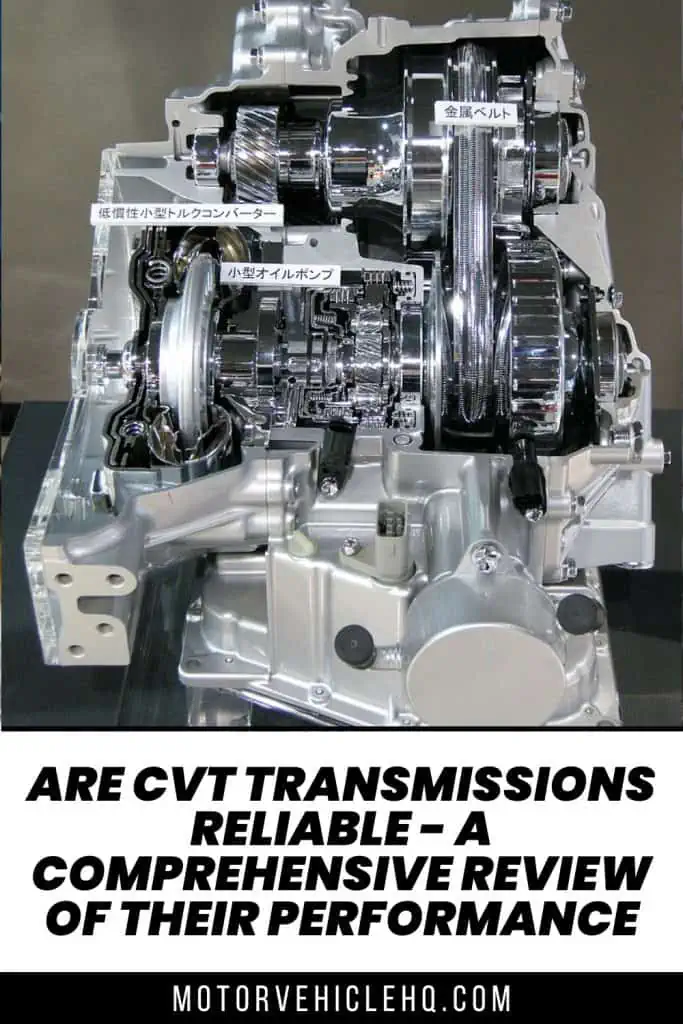
A continuously variable transmission by Hatsukari715

Jim Wicks is the founder of MotorVehicleHQ. With over two decades of experience in the automotive industry and a degree in Automotive Technology, Jim is a certified car expert who has worked in various roles ranging from a mechanic, car dealership manager, to a racing car driver. He has owned more than 20 cars over the past 15 years. Ask him about any vehicle you see on the road and he can tell you the make, model and year. He loves the aesthetics of all things cars, and keeps his vehicles in pristine condition.
In his free time, Jim enjoys getting his hands dirty under the hood of a classic car or taking long drives along the country roads. His favorite car? A 1967 Shelby GT500, a true classic that, according to Jim, “represents the pure essence of American muscle.”
